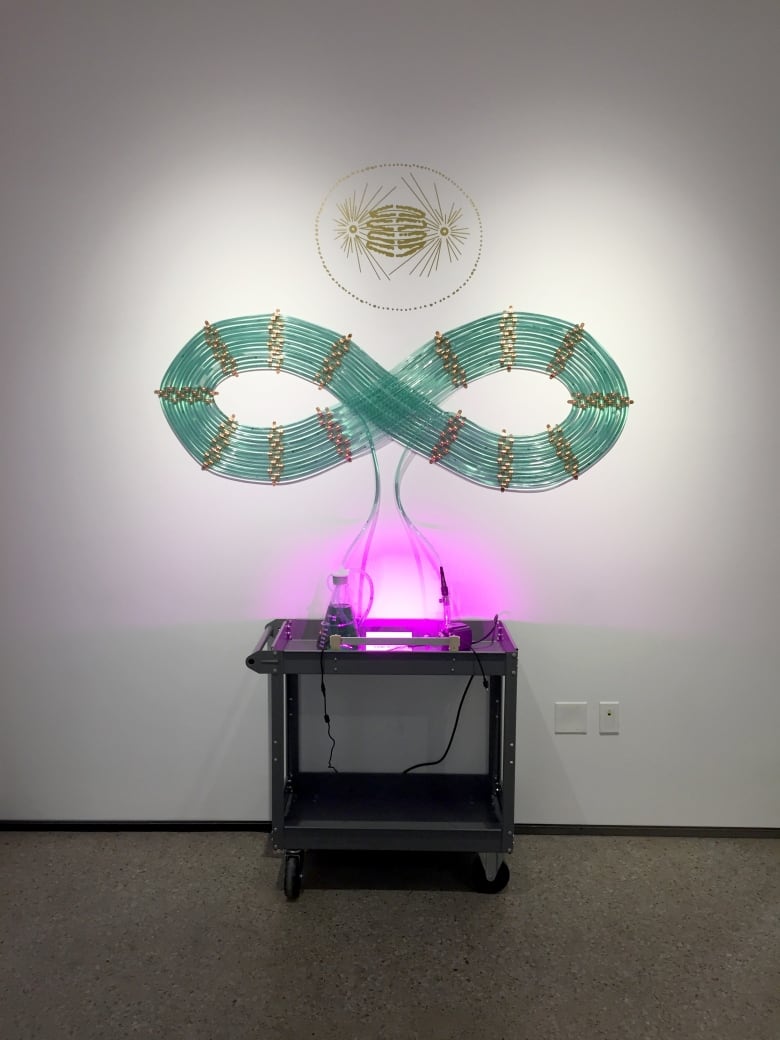Living art: a spotlight on Windsor bio-artist Jennifer Willet
Jennifer Willet invites you to explore the smelly and fun world of bio-art

Many artists use paints and brushes to make their art, but not Jennifer Willet. Her material is a little different. The Windsor artist uses living things like enzymes and bacteria in her work.
She's a professor in the School of Creative Arts at the University of Windsor, a Canada Research Chair in art, science and ecology, and the director of Incubator Art Lab (part of the University of Windsor's downtown campus).
She's a bio-artist and her work combines art and bio-technology.
"I'm trying to create these real encounters for humans with non-human organisms in these creative environments," she said.

One piece she calls an algae spiral sends algae and air bubbles through tubes as a visual display meant for mounting on a gallery wall. The piece recently adorned a mural in a gallery in Slovenia.
And while bio-art sounds contemporary, and is contemporary art, Willet notes it's been around for centuries and may have been the earliest form of art. An early example of bio-art is cave paintings, which were often made from organic materials such as animal blood.
She first discovered her passion for bio-art as a youth, drawing scientific diagrams for fun. She went on to do anatomical drawing, and it's there that she really developed a passion for being an artist in a lab setting, and working with living things. Now 20 years into the practice, she shares that passion with students, gallery goers and those who sign up for workshops.
Some bio-art smells like farts.- Jennifer Willet
There's one thing to prepare yourself for though: "Some bio-art smells like farts…" said Willet.
But the smell is a reminder that this art is alive, and it's an invitation to observe their micro-existence and beauty. Willet is attached to the organisms, and views her relationship with them as a collaboration or as pets, plants or children. And like our relationships with children and pets, there are ethical considerations.
"If anything has a spine, you have to get ethical research approval to move forward on it," Willet said.
Willet doesn't work with whole organisms and sees her work as being beneficial for the specimens she cultivates.
Cultivating bacteria for an art project can also be a health and safety concern. But the chance of a gallery piece exposing you to a dangerous pathogen is pretty low in her view. She did say there was "one piece in MOMA [the Museum of Modern Art] in New York, not my work, by a tissue culture and art project in a design show, where the curator did have to kill it because it was escaping the containers." But, she stresses, no one was harmed.
The pandemic also brought more attention to bio-art. Bio-technology is now in the mainstream, and it's made the past few years very busy for bio-artists like Willet. Those interested in making bio-art can find kits online to create simple pieces, or enroll in one of Willet's workshops to see more of her work and process at incubatorartlab.com
